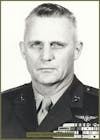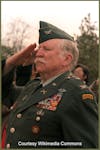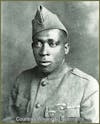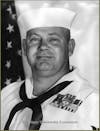US Army Sgt. Henry Johnson - Medal of Honor Recipient during WWI
US Army Sgt. Henry Johnson faced an enemy force of approximately 36 men and fought them off nearly by himself. He held off their advance until reinforcements arrived, which kept the Germans from ever overrunning his position...
US Army Sgt. Henry Johnson faced an enemy force of approximately 36 men and fought them off nearly by himself. He held off their advance until reinforcements arrived, which kept the Germans from ever overrunning his position. It would take decades, but he was finally honored with the US Medal of Honor and I'm honored to tell you his story.
Thank you for listening to Duty & Valor!
Music by Amelie Leclerc. Artist's other music can be found at https://soundcloud.com/amelieleclerc
Please follow us on your favorite social media site.
Facebook
Instagram
Twitter
YouTube
Duty & Valor may receive affiliate compensation from product referrals.
Welcome back everyone. On today’s episode of Duty & Valor, I’m going to tell you the story of a man who volunteered for the US Army, where he fought during WWI. A man who had to face discrimination in a time when our military branches were still segregated. A man that would face dozens of enemy men and stop their charge nearly single-handedly. This is the story of Medal of Honor Recipient US Army Sgt. Henry Johnson.
William Henry Johnson, who would go by Henry Johnson, was born on July 15th , 1892 in Winston-Salem, North Carolina before moving to New York as a teenager. Through high school and the years after, he took jobs as a laborer, soda mixer, chauffeur, and then as a porter at Albany’s Union Station. Two months after the US officially entered WWI, Henry enlisted in the Army on June 5th, 1917, and he was assigned to the 15th New York Infantry Regiment. The 15th was a segregated African American unit led by a few white officers. His unit arrived in France where they were re-designated as the 369th Infantry Regiment, part of the 185th Infantry Brigade.
At a time where many servicemen refused to fight alongside any African-American soldiers, as they felt they were inferior fighting men, the 369th weren’t well received. They were not getting the combat training that other units were receiving, rather they were used as general laborers unloading ships and digging latrines. Eventually they were integrated into the 161st Division of the French Army, and they arrived at the western edge of the Argonne Forest in NorthEastern France in early April of 1918. There the combined French and American forces occupied Outpost 20, which guarded a nearby bridge.
The first few weeks of their time there was quiet, so Johnson and the 369th saw very little action. This gave them time to receive some combat training and become familiar with enough French words to allow them to receive commands from the officers.
On the night of May 15th, the quiet ended. Pvt. Johnson was on patrol duty from midnight to 0400 alongside Pvt. Needham Roberts of Trenton, NJ. At 0200, Johnson, who stood at 5’4” and weighed 130 pounds and the 17 year old Roberts were alerted by the sound of wire cutters by their perimeter fence.
The Germans, who numbered up to 36, were attempting to destroy Outpost 20 and capture POW’s. Johnson told Roberts to race back to alert the other men of the imminent attack. As Roberts turned to run, a German grenade landed close to their position and Roberts received shrapnel wounds to his hip and arm. Johnson had Roberts lay down in the trench and asked him to keep handing him grenades. Johnson continued to throw grenades at the advancing Germans, which temporarily slowed them down. Eventually, Johnson had exhausted the supply of grenades which forced him to pick up his French Labelle rifle. One of the major drawbacks to this rifle was that it could only support a magazine clip with a three round capacity.
As the Germans were quickly advancing on his position, Johnson took his first two shots at the enemy before an attacker was right in front of his muzzle. He was able to fire his last round into the chest of the German and he fell dead. As that man hit the ground, a comrade of his jumped over him armed with a pistol. As Johnson had no time to reload his rifle, he swung it and hit the German square on the head and he fell reeling from the pain. He kept wielding the unloaded gun as a club and took aim at the head and faces of any German that tried to get near him. He continued this until the gun stock fell apart.
Johnson then looked over at Roberts and was horrified to see two German soldiers picking him up, in an attempt to bring him back to their line. As he had no functioning rifle, he reached down and armed himself with his bolo knife. He charged the two men so fiercely that they were taken off guard. He brought the heavy knife down on the head of one of the men, killing him instantly. He then turned to the second man, then a third, then a fourth. He continued swinging the bolo knife wildly; slashing and cutting up the nearby Germans. While fighting for his life he was struck by a bullet from an automatic pistol. In total he was wounded twenty one times, but he didn’t stop fighting. With Roberts at his feet, Johnson continued the hand to hand defense of his position until reinforcements finally arrived. It was reported that it took almost an hour to muster these reinforcements, but as they arrived the Germans called for a retreat and they escaped into the night. With the French and Americans by his side, Johnson fainted due to his injuries and pure exhaustion.
As dawn was breaking, those walking the carnage of the battlefield were left speechless at all of the blood on the ground. The Germans had left behind four of their dead comrades, along with helmets, and gear, of many more. This led them to estimate that the attacking force numbered approximately 36, and it was believed that Johnson had killed the four Germans and wounded up to 20 others. Soon after they would refer to him as the Black Death.
Though badly injured, Privates Roberts and Johnson would survive. They were both awarded the French Cross of War, with Johnson’s adorned with the Golden Palm, which was awarded for extraordinary valor in combat.
Johnson didn’t think he did anything great, and said “there wasn’t anything so fine about it. I just fought for my life. A rabbit would have done that”. Beginning with Johnson’s actions, the 369th Infantry Regiment would go on to prove themselves countless times during the war and they were given the moniker of the Harlem Hellfighters.
Following the war, Johnson, now a Sgt., was atop the lead vehicle as he led the 369th in a victory parade in New York City in January, 1919. Though the parade goers would honor Johnson, the Army didn’t. His discharge papers made no note of his injuries and he was denied the disability pay that other returning servicemen received. This was a dishonor to his service as the Army was simultaneously using his story and image in recruiting materials and Victory War stamps. He returned to his job as a porter at Albany Union station, and he struggled with his health until his death in 1929, two weeks shy of his 37th birthday. Sgt. Johnson was buried at Arlington National Cemetery with full military honors.
Though his story was long well-known, as it was first featured in August 1918 in the Saturday Evening Post, as well as many other print media, it took decades to receive some of the long overdue honors. It wasn’t until 1996 before he was awarded a purple heart, the distinguished Service Cross in 2002, and finally the Medal of Honor on June 2nd, 2015. At the White House ceremony, President Obama said that “The least we can do is to say we know who you are, we know what you did for us. We are forever grateful”.
Thank you for listening, and if you enjoyed this week's show, we kindly ask that you follow us and leave a review and 5 star rating. Links to the sources for today's show can be found in the show notes, as well as at dutyandvalor.com. And join us next week where we’ll tell you the story of another true American hero.




















